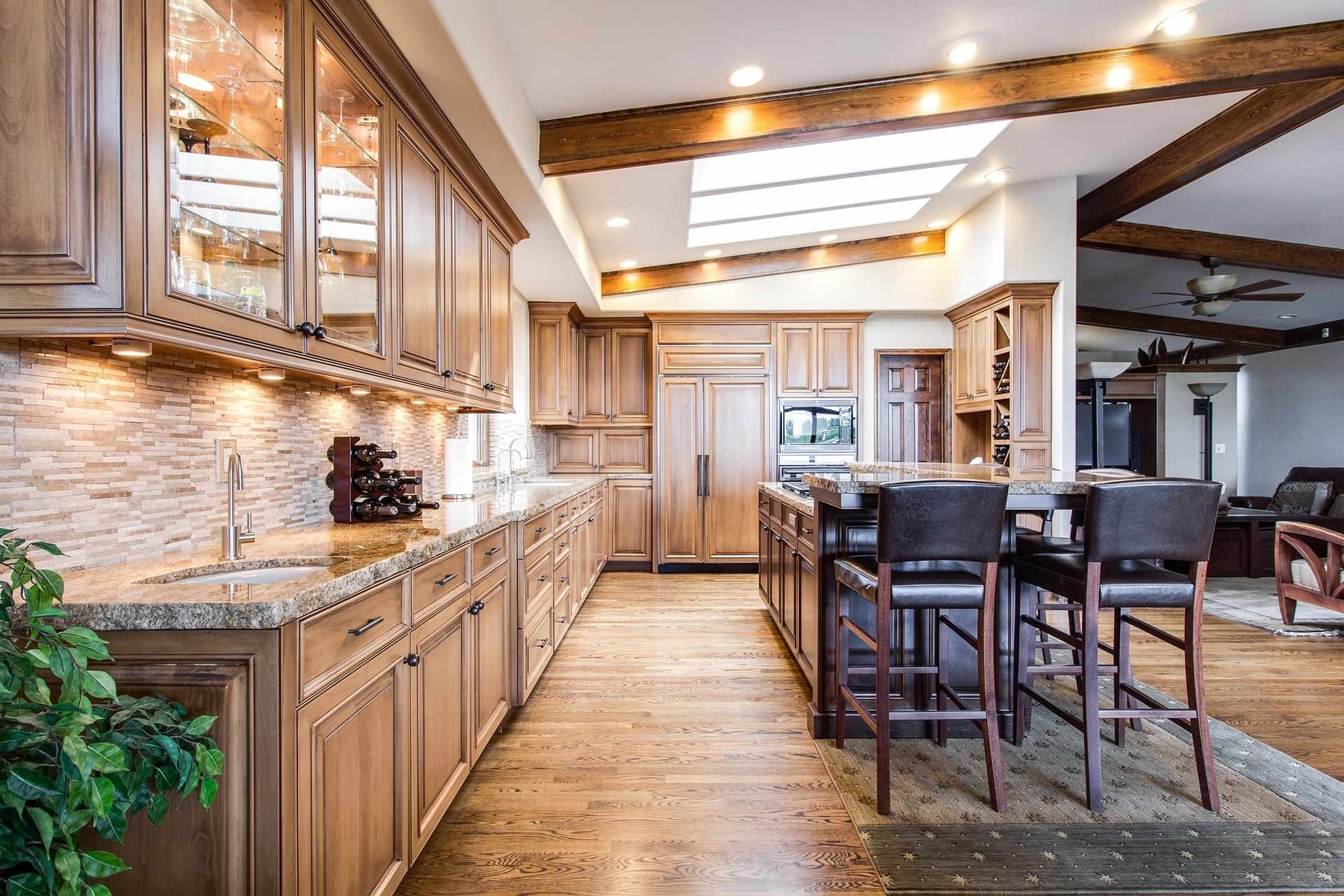Here Are The New Kitchen Trends In 2025
Kitchen design continues to evolve rapidly, with 2025 bringing fresh perspectives on functionality, sustainability, and style. Modern homeowners are embracing innovative materials, smart technology integration, and design philosophies that prioritise both aesthetics and practicality. These emerging trends reflect changing lifestyles, environmental consciousness, and the desire for personalised spaces that serve as the heart of contemporary homes. Understanding these developments can help inform decisions about kitchen updates and renovations.

What Kitchen Designs Are Gaining Popularity This Year?
Warm minimalism dominates kitchen design preferences in 2025, moving away from stark white spaces toward more inviting colour palettes. Natural wood tones, particularly walnut and oak, are being incorporated alongside soft earth tones like sage green, warm terracotta, and creamy beiges. Mixed material combinations create visual interest, with homeowners pairing sleek quartz countertops with natural stone backsplashes or combining matte black fixtures with brass accents. Open shelving continues to grow in popularity, but with more intentional styling that balances functionality with aesthetic appeal.
Statement lighting has become a focal point, with oversized pendant lights and sculptural fixtures replacing traditional under-cabinet lighting as the primary design feature. Kitchen islands are expanding beyond simple prep spaces to become multi-functional zones incorporating seating, storage, and even integrated appliances like wine coolers or warming drawers.
How Is Kitchen Cabinet Renovation Evolving?
Cabinet renovation techniques have advanced significantly, offering homeowners more options than complete replacement. Refacing existing cabinet boxes with new doors and drawer fronts has become increasingly sophisticated, with manufacturers offering wider ranges of materials and finishes. Two-toned cabinet designs are particularly trendy, often featuring darker lower cabinets paired with lighter upper units or contrasting kitchen islands.
Handle-free designs continue gaining momentum, with push-to-open mechanisms and integrated finger pulls creating seamless appearances. When hardware is used, chunky brass and matte black finishes dominate, often in geometric shapes that add architectural interest. Glass-front cabinets are making a comeback, but with fluted or ribbed glass that provides privacy while maintaining visual lightness.
Cabinet interiors are receiving equal attention, with custom organisational systems, pull-out drawers, and specialised storage solutions becoming standard expectations rather than luxury additions. Vertical storage maximisation addresses the growing need for efficient space utilisation in both large and compact kitchens.
What Services Do Kitchen Door Replacement Companies in Your Area Offer?
Local kitchen door replacement services have expanded their offerings to meet diverse renovation needs and budgets. Most companies now provide comprehensive consultations including design advice, material selection guidance, and 3D visualisation services to help homeowners envision their renovated spaces. Standard services typically include precise measuring, custom door manufacturing, and professional installation with minimal disruption to daily routines.
Many providers offer eco-friendly options, including doors made from sustainable materials like bamboo or reclaimed wood, alongside traditional options. Quick-turnaround services have become increasingly available, with some companies completing door replacements within one to two weeks from order confirmation. Additional services often include hardware updates, soft-close hinge installations, and colour-matching existing cabinetry for seamless integration.
Some companies also provide complementary services such as worktop updates, splashback installations, and lighting improvements to create cohesive renovation packages. Mobile showrooms and in-home consultations have become standard practices, allowing customers to see materials and finishes in their actual lighting conditions before making decisions.
| Service Type | Typical Cost Range | Timeline | Key Features |
|---|---|---|---|
| Door Replacement Only | £800-£3,000 | 1-3 weeks | New doors, existing frames |
| Full Cabinet Refacing | £3,000-£8,000 | 2-4 weeks | Doors, drawer fronts, veneering |
| Custom Door Manufacturing | £1,200-£4,500 | 3-6 weeks | Bespoke sizing, premium materials |
| Complete Kitchen Renovation | £8,000-£25,000 | 6-12 weeks | Full design and installation |
Prices, rates, or cost estimates mentioned in this article are based on the latest available information but may change over time. Independent research is advised before making financial decisions.
Which Smart Technology Integrations Are Trending?
Smart technology integration has moved beyond novelty features to become practical kitchen essentials. Induction hobs with precise temperature control and smartphone connectivity allow remote monitoring and timer management. Smart refrigerators now offer internal cameras, inventory tracking, and integration with grocery delivery services, while maintaining energy efficiency standards.
Voice-controlled assistants are being built into kitchen designs more seamlessly, often integrated into range hoods or backsplash areas rather than occupying counter space. Smart faucets with touchless operation and temperature presets have gained popularity, particularly following increased hygiene awareness. Automated lighting systems that adjust throughout the day and motion-sensor cabinet lighting enhance both functionality and ambiance.
Smart storage solutions include motorised shelving systems and app-controlled pantry organisation that tracks expiration dates and suggests meal planning based on available ingredients. These technological additions focus on enhancing daily efficiency rather than showcasing gadgetry.
What Sustainable Materials Are Becoming Standard?
Sustainability considerations are reshaping material choices across all kitchen elements. Recycled glass countertops and bio-based composites offer durability while reducing environmental impact. Reclaimed wood is being used creatively for islands, shelving, and accent walls, bringing character while supporting circular economy principles.
Low-VOC paints and finishes have become standard rather than premium options, improving indoor air quality without compromising aesthetic choices. Bamboo and cork flooring options provide water resistance and comfort while maintaining renewable sourcing credentials. Even traditional materials like granite and marble are being sourced more responsibly, with suppliers providing transparency about quarrying practices and transportation methods.
Energy-efficient appliances have evolved beyond basic energy ratings to include features like variable-speed motors, improved insulation, and smart power management that automatically optimises energy consumption based on usage patterns.
The kitchen trends emerging in 2025 reflect a maturation of design thinking that balances aesthetic preferences with practical needs and environmental responsibility. These developments offer multiple approaches to kitchen improvement, from comprehensive renovations to targeted updates that can significantly impact both functionality and visual appeal. Whether pursuing dramatic transformations or subtle refinements, understanding these trends provides valuable guidance for creating kitchens that serve contemporary lifestyles while maintaining lasting appeal.




